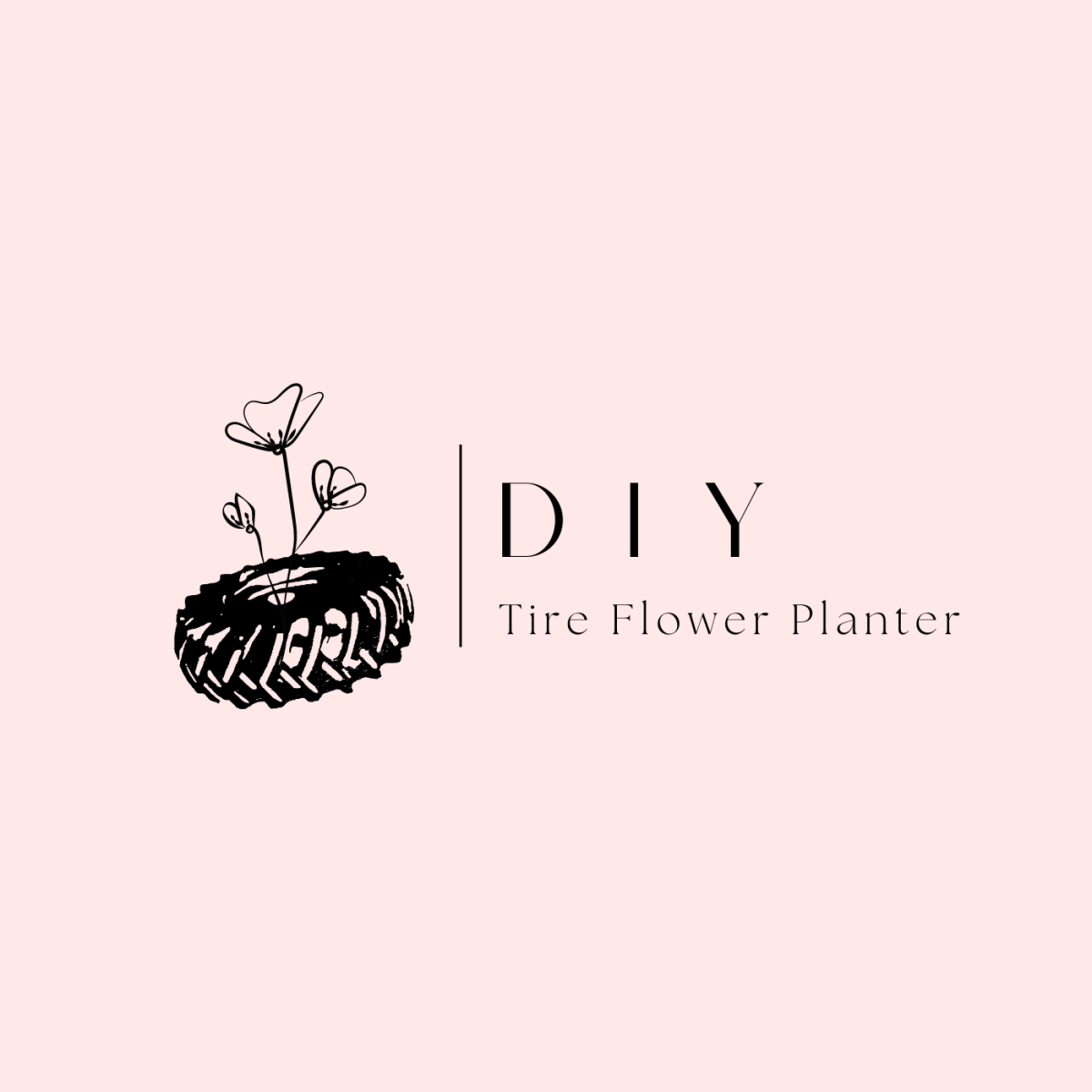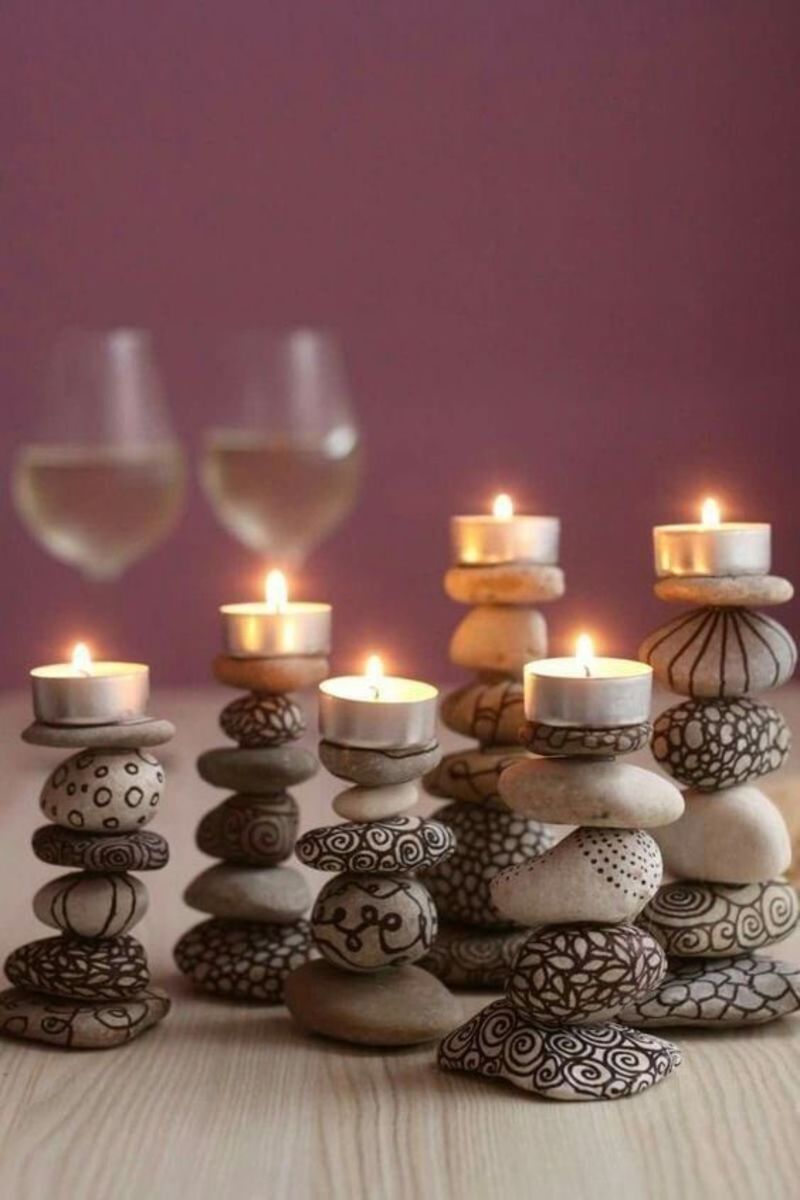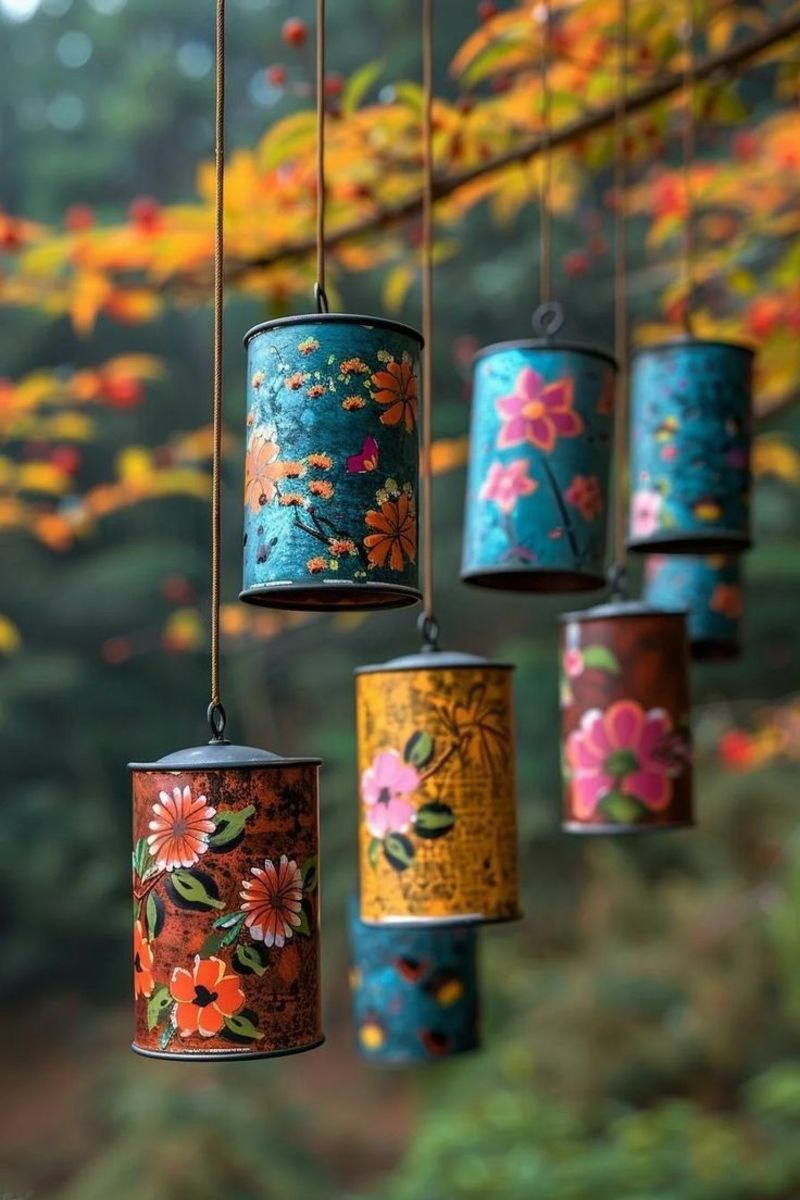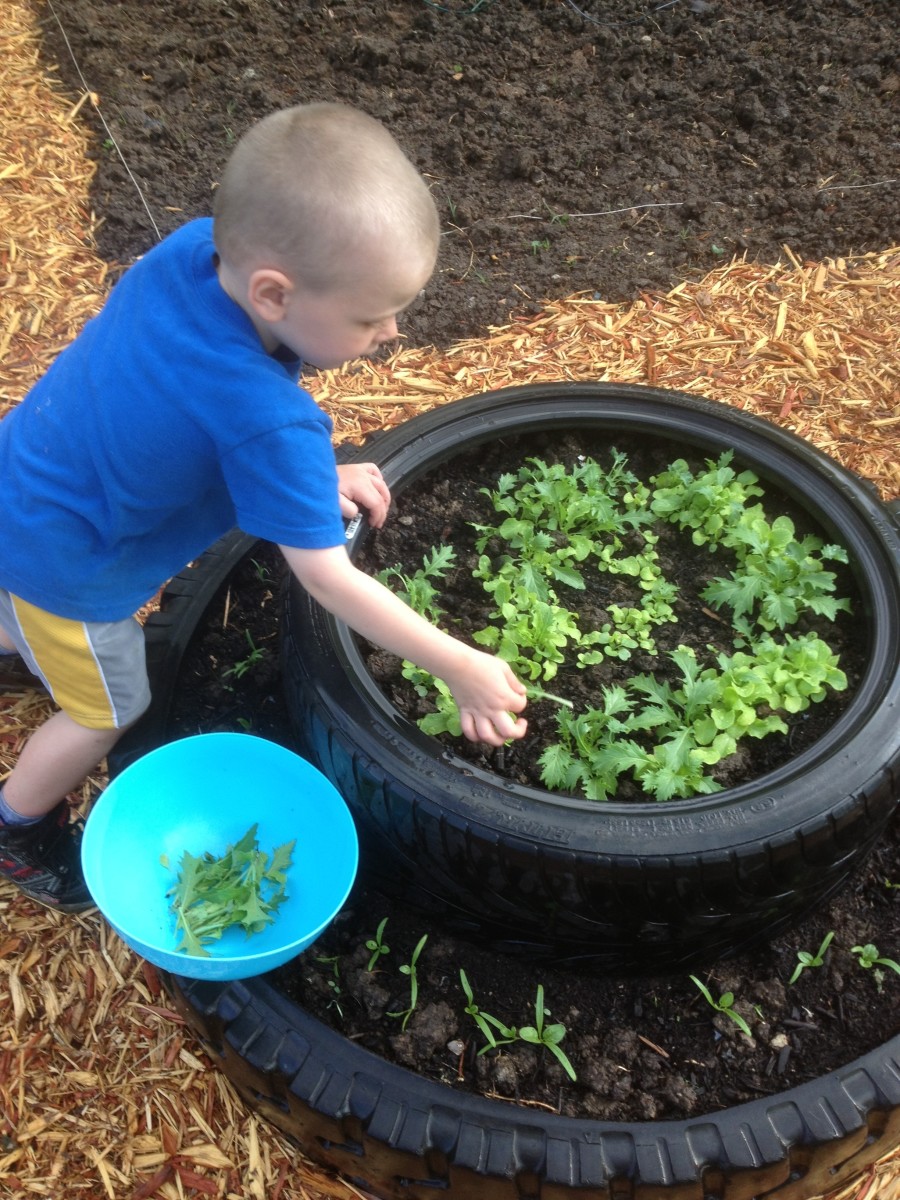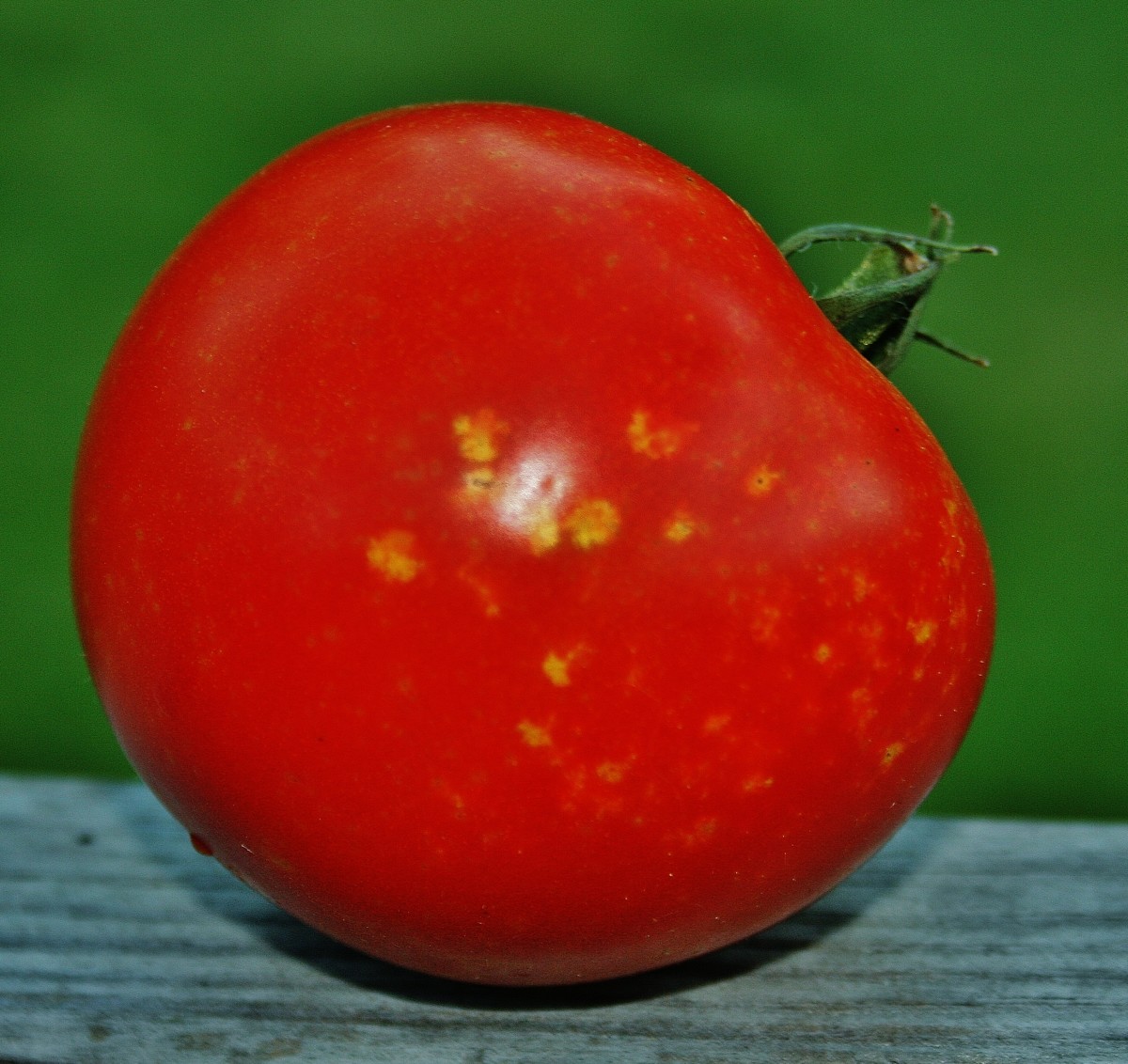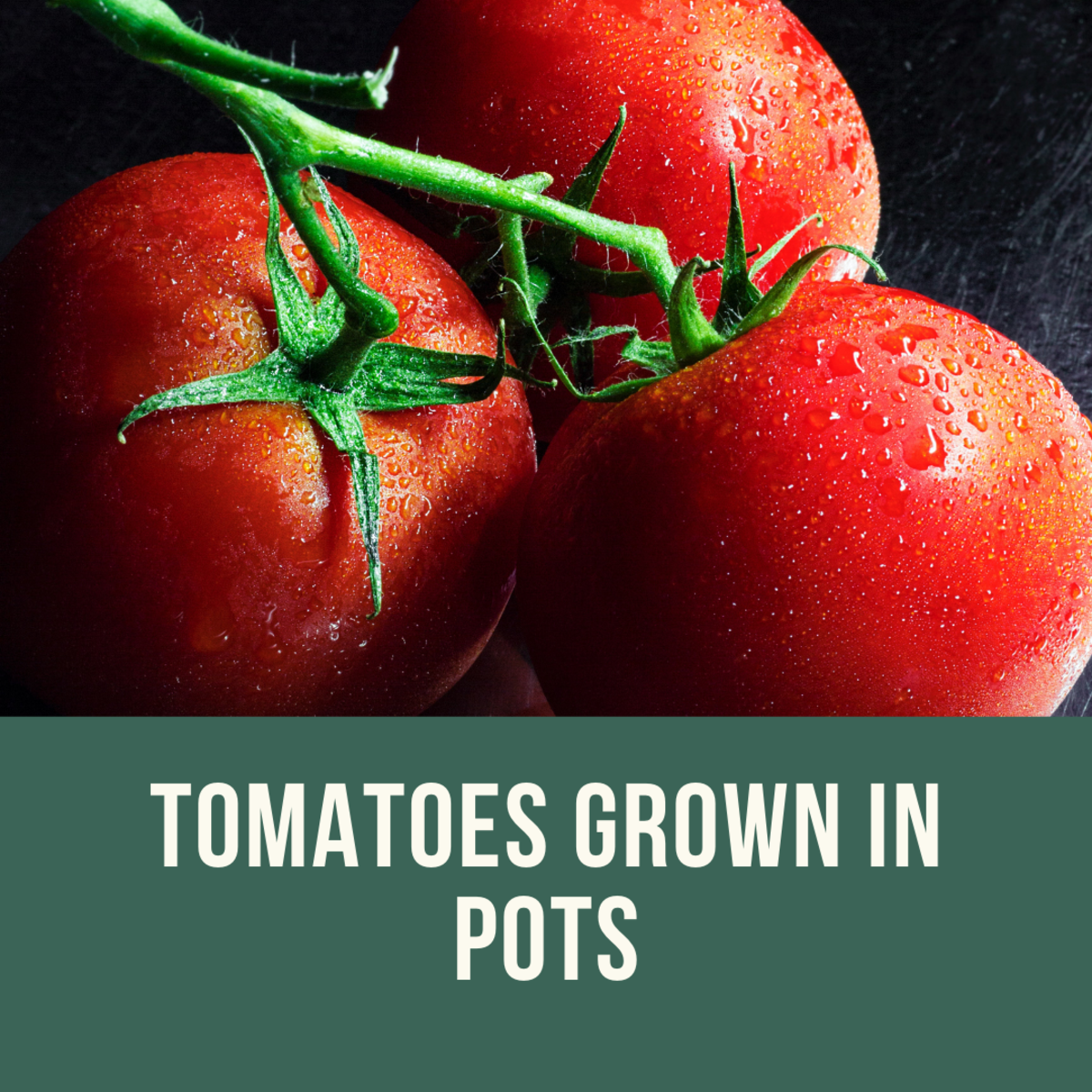Garden Journal #11: Plants and Plans in April 2016
April 28,2016
As usual, it has been a slow and steady process this year for getting my garden planted. I do love admitting that it is actually getting easier each year, to build on what we've previously done.
I will try to document most of this month through pictures and description, but in general, I'm pleased with where things are headed. So far, I've started several herbs, heirloom and cherry tomatoes (from the Tanglewood Master Gardeners), and have a few volunteer squash and potatoes that have returned.
I tapped into our somewhat decomposed compost pile and tilled that into both big beds.
And my darling husband is working tirelessly on the big building projects and the landscaping of our entire yard, including the garden area, so that perhaps this time next year, we'll enjoy the final look as well as some of the fruit of our labor.
Project #1: Sub Irrigation Planters
I spent the better part of more than a few winter nights on Pinterest, learning all about Sub-Irrigation Planters, also known as SIP's. While many call these things "self-watering planters" - there is an entire site devoted to educating growers against that name, and to helping people make these themselves, from scratch. Note: the link will take you to the most comprehensive informational site, which is poorly organized but chalk full of people making and using SIPs in their urban as well as rural gardens. Some look amazing. Generally speaking, if I could get this to work, I could essentially cut my watering time in half (or more) and grow what looks like three times as much produce than I'm currently growing, since I manage to let much of my garden die of thirst each year.
In short, the idea of a SIP is not that it "self-waters" - but more that the planter holds water in the bottom (in a reservoir that does not leak), the dirt goes on top, and the plants' roots find the water below. There is an overflow valve that is drilled at the top of the water line so you do not water-log your entire planter. This valve shows you when the reservoir is full and allows for run off in case of rain.
If this sounds complicated, I agree with you. I watched about 12 videos and read about 6 different blogs with detailed instructions, and still had to have my husband explain to me the physics of this.
They are built in a number of ways, but the principle idea is that you add water to the reservoir from a pipe that comes out the top of your planter. As long as the reservoir is full, it is said that the plant will evaporate less water, not be as susceptible to weeds, require less watering overall, and ultimately grow better.
If you google it, you will find tons of these home made jobs.
We decided to do this to the smaller of our raised beds this year, and if it works, we will dig out the bigger bed and add another next year.
Sub Irrigation Planter (SIP)
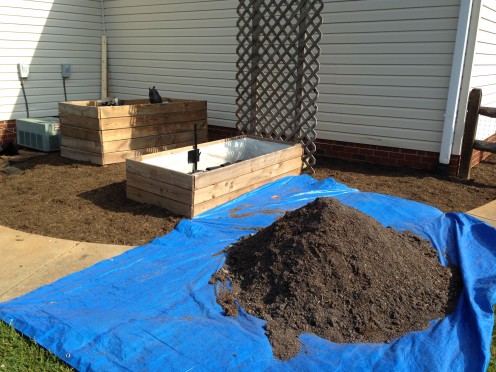
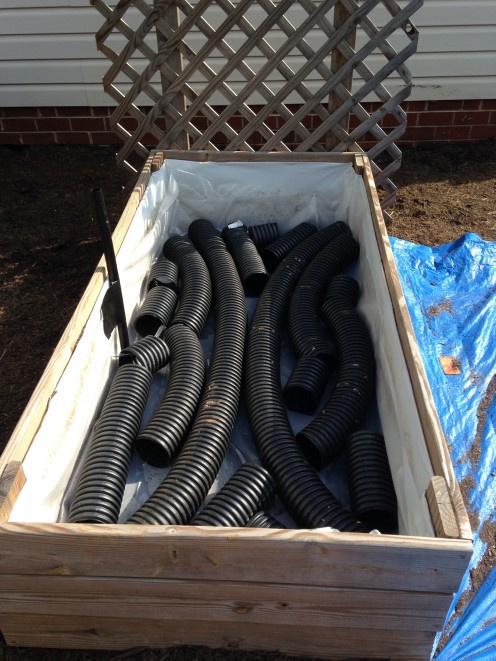
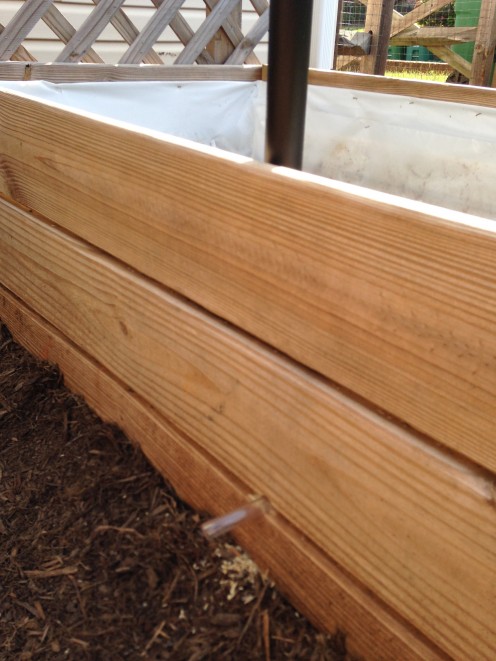
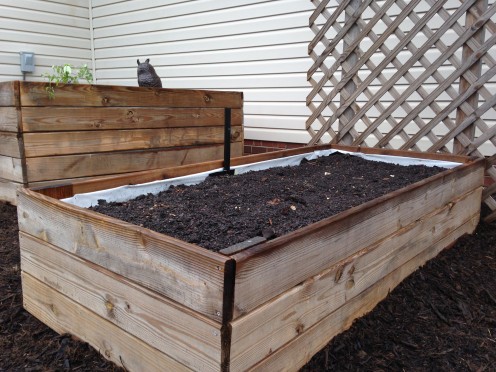
Problem: Too Much Sun
One of my biggest problems with my backyard garden area is that it receives full sun, nearly all day long. I'm already mildly terrible at remembering to water things in the early morning hours. Then, with many of my plants in pots, well, you can imagine. Basically, everything gets scorched.
Many of my neighbors have a lot of success with their gardens that are actually in shade for the hottest parts of the day. NC gets very hot, and in the last few years, has seen very little rain in June, July, and August.
In light of this, I'm making a few changes this year:
- Moving all herbs to the front yard.
- Moving all tomatoes to a planter, rather than individual pots.
- Sub-Irrigation Planters
- Plans for creating shade on the current garden plot through a trellis or pergola.
- Better mulching to retain moisture.
Planted SIP
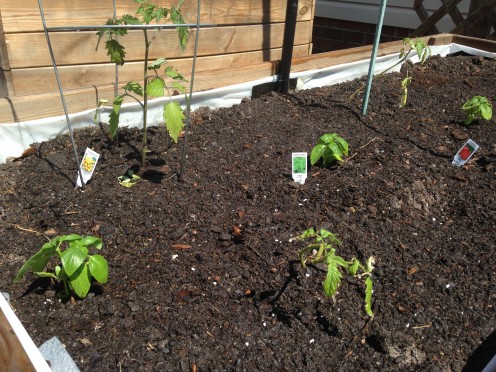
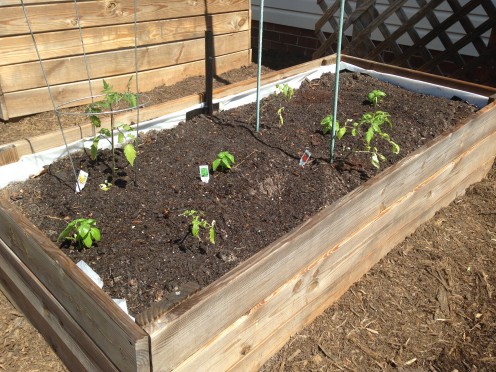
Large Raised Bed
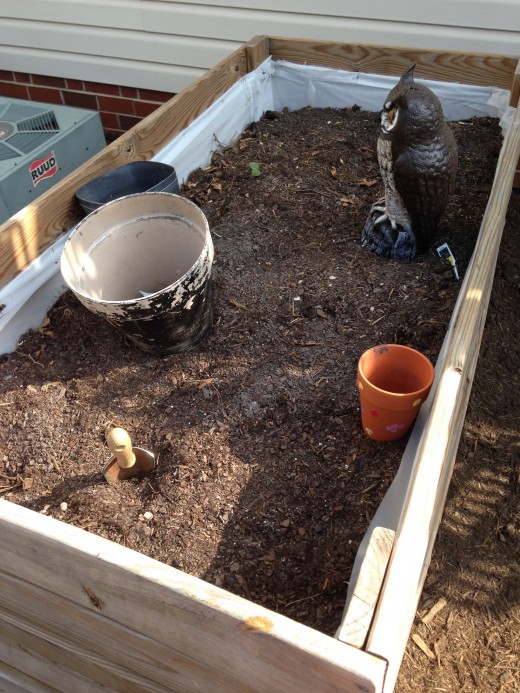
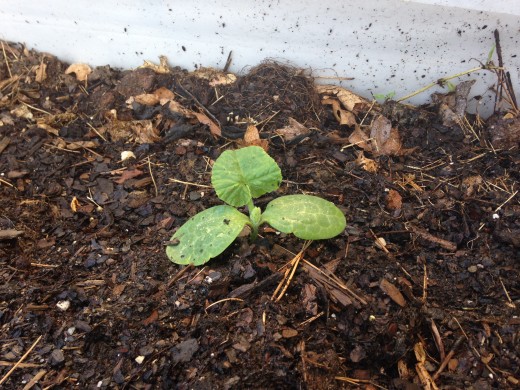
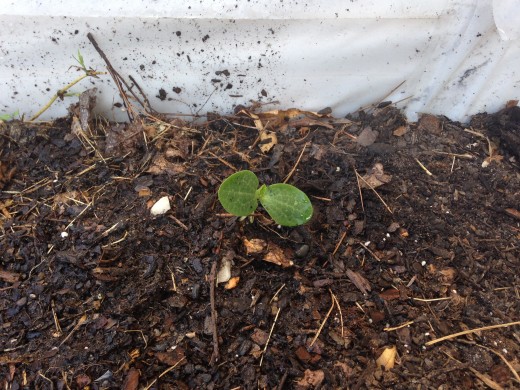
Herbs
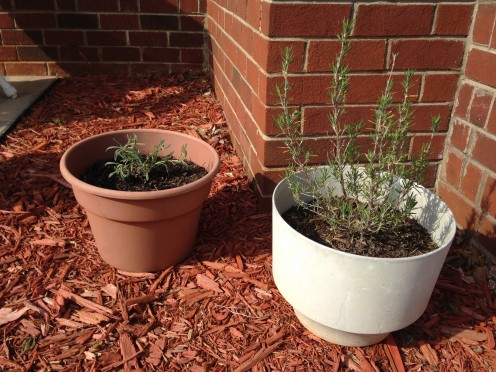
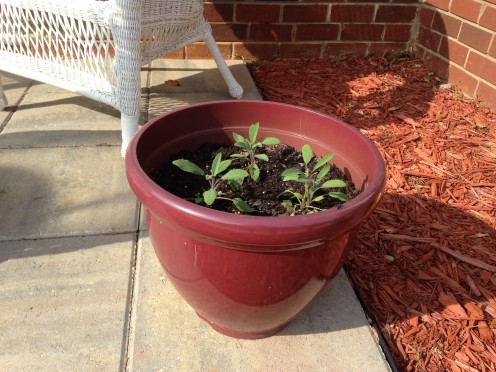
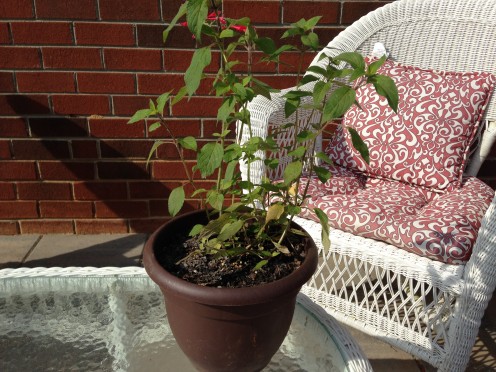
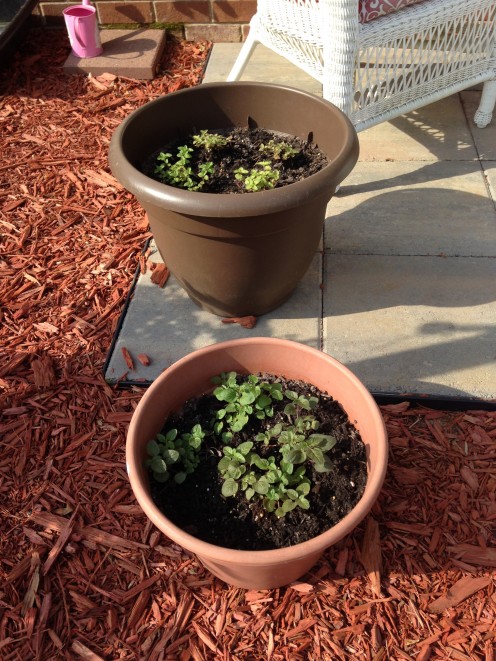
Plans for next month
- Blueberries and Raspberries?
- Small pots of herbs: citronella, mint, lemon balm?
- Okra and cucumbers.
- Figure out the squash situation.

